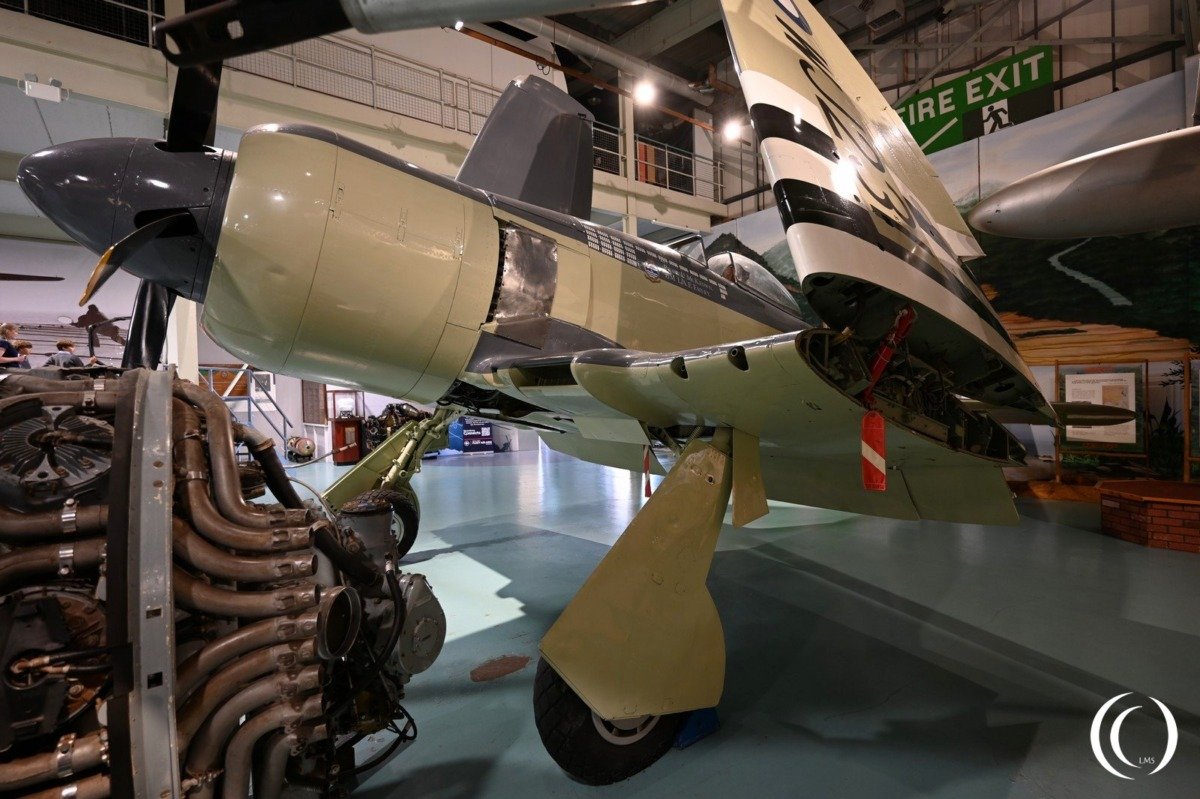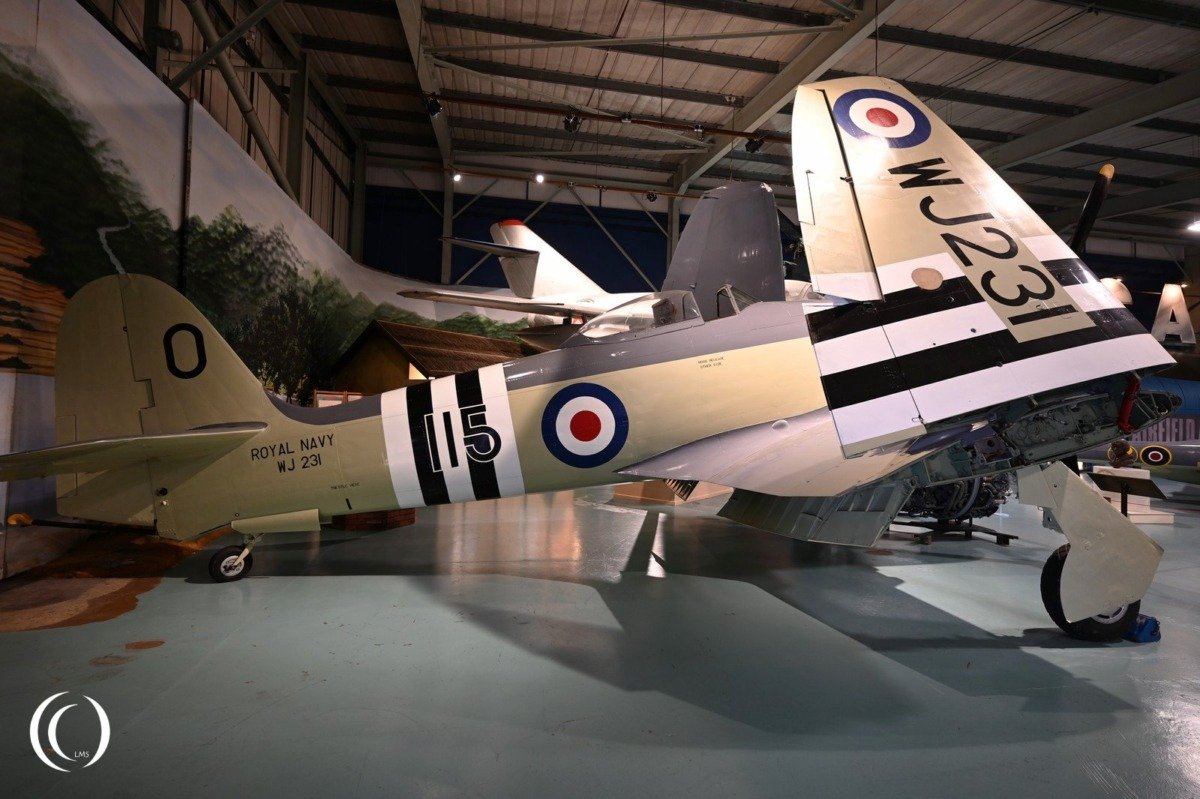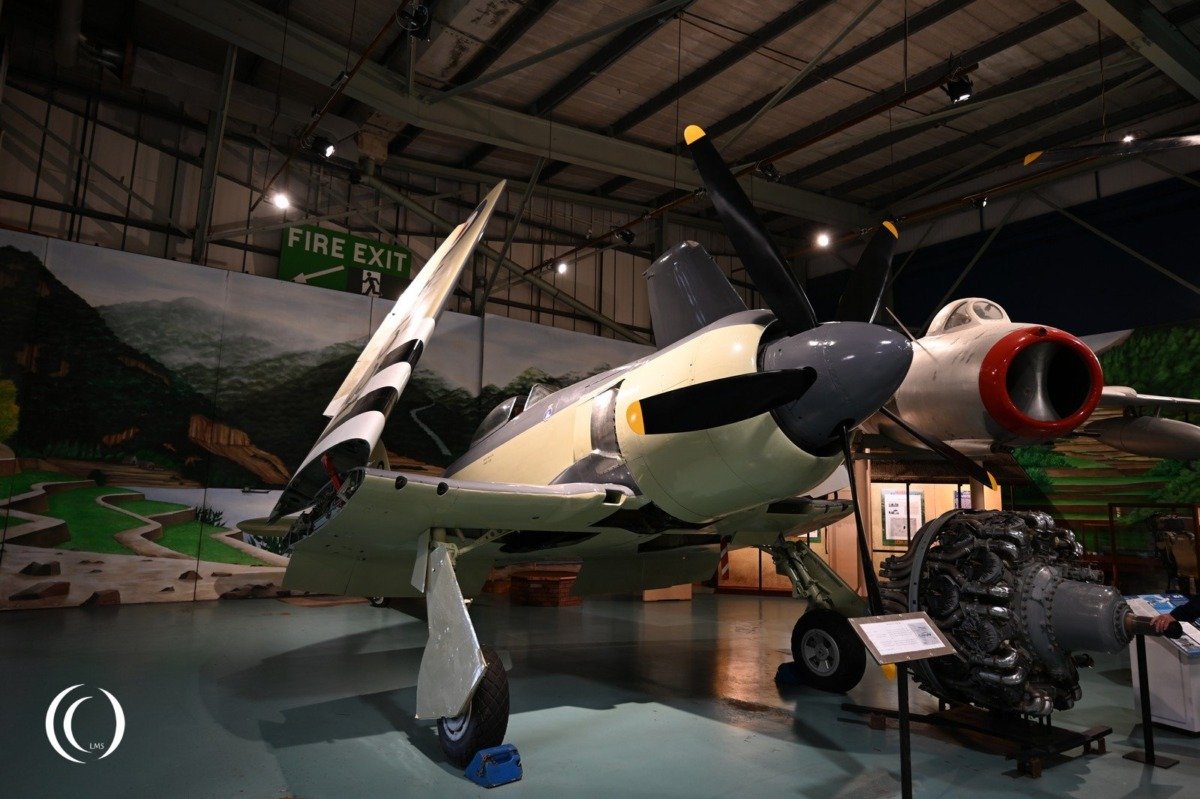
The Hawker Sea Fury was one of the fastest piston-engine fighter aircraft ever built and the last of its kind to serve with the Royal Navy’s Fleet Air Arm. Developed during World War II but entering service just after the war in 1947, the Sea Fury was a navalized evolution of the Hawker Tempest, featuring folding wings, tail hook, and reinforced undercarriage for carrier operations. The Hawker Fury’s first flight was on 1 September 1944, the carrier adapted version, Sea Fury’s first flight was on 21 February 1945.As the war progressed in favor of the Allied forces mass production was postponed until the war was over.
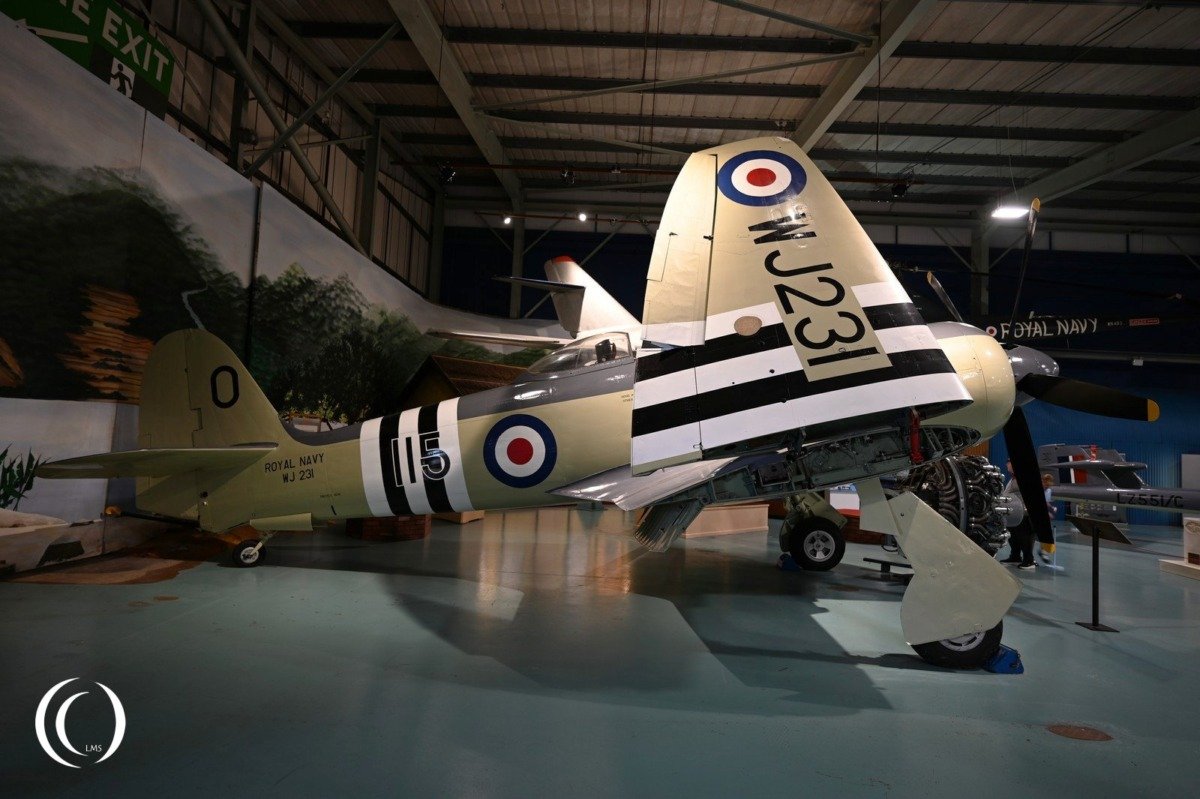
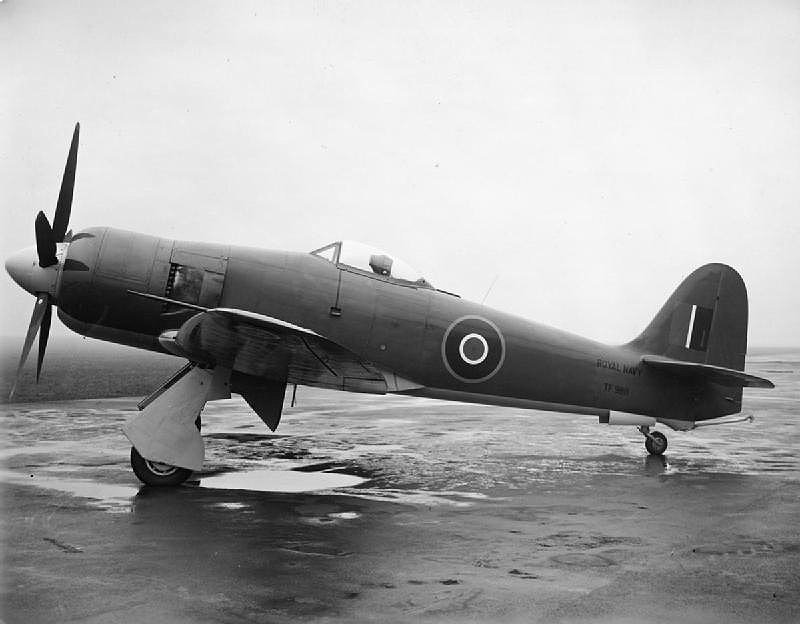
It was powered by the Bristol Centaurus XVIII radial engine, producing over 2,400 hp, it could exceed 460 mph (740 km/h), offering remarkable speed and maneuverability for a piston aircraft. It was armed with four 20mm Hispano cannons and could carry bombs and rockets, making it effective in both fighter and ground-attack roles.
The Sea Fury saw notable combat during the Korean War, where it operated alongside early jet aircraft and even famously shot down a MiG-15 in a rare prop-versus-jet engagement. It remained in service with several navies, including the Royal Navy, Royal Canadian Navy, and Royal Australian Navy, into the mid-1950s.
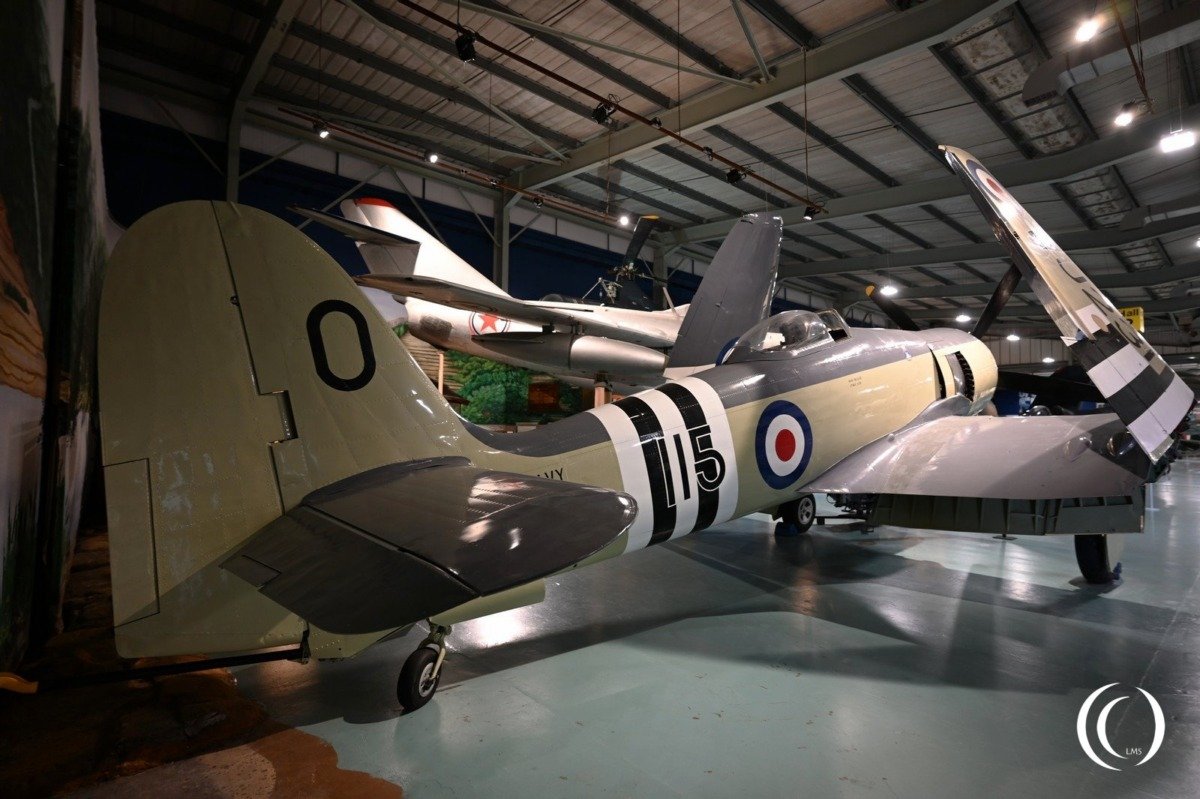
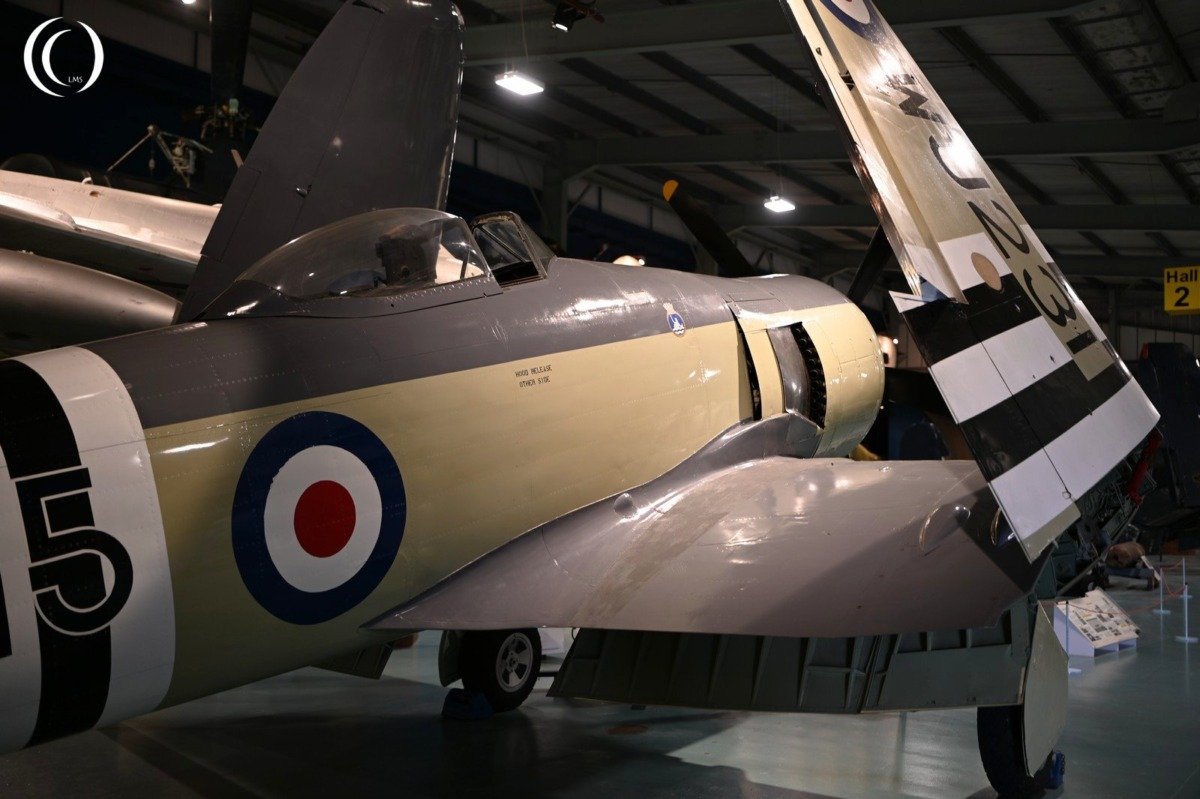
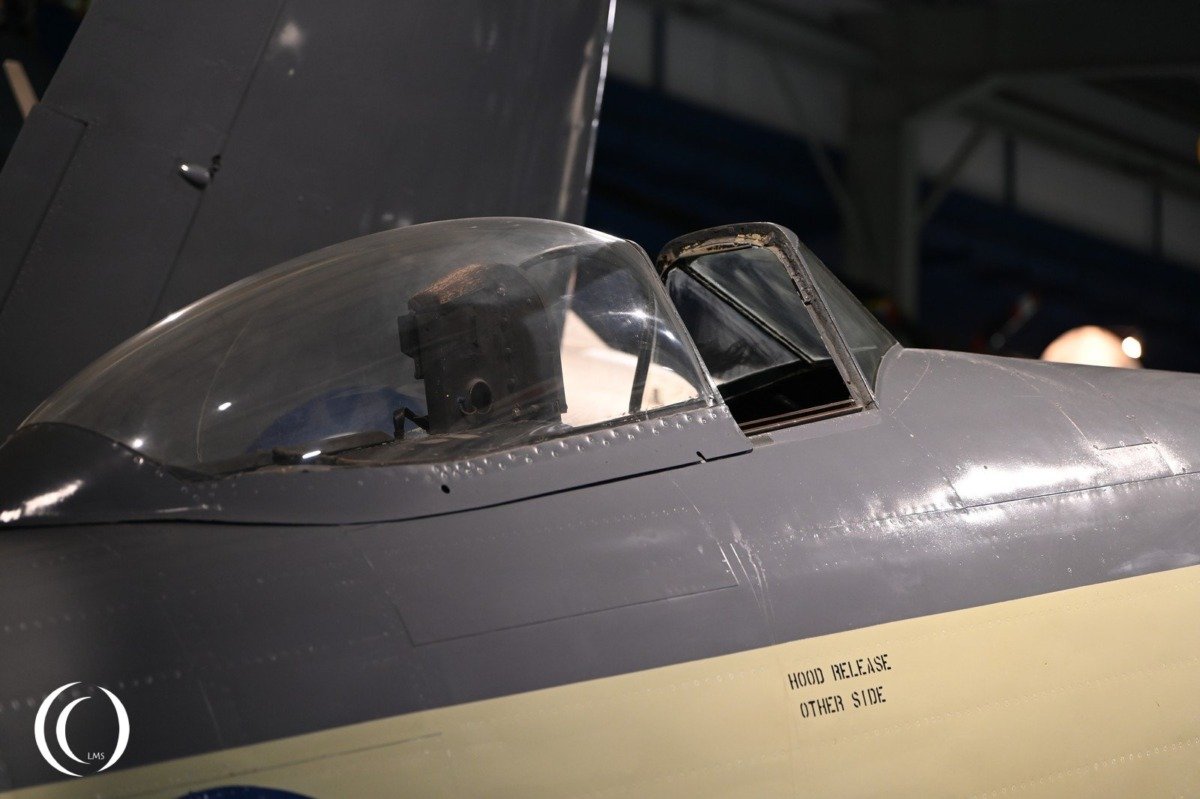
Technical specifications
The Hawker Sea Fury had one pilot. The aircraft was 34 ft 8 in (10.57 m) long, 15 ft 10.5 in (4.84 m) high and had a wingspan of 38 ft 4.75 in (11.70 m). It was powered by a Bristol Centaurus 18, a 18-cylinder air-cooled radial piston engine with 2,480 hp and had a 5-bladed constant-speed propeller. Its top speed was 460 mph (740 km/h) at 18,000 ft (5,500 m) and had a maximum range of 780 mi (1,260 km), 904 mi (1,455 km) with two top tanks.
The Sea Fury was armed with four 20 mm (0.79 in) Hispano Mk V autocannon with 145 rounds per gun, and could carry up to sixteen 3 inch rockets. Its maximum bomb load was 2,000 lb (910 kg).
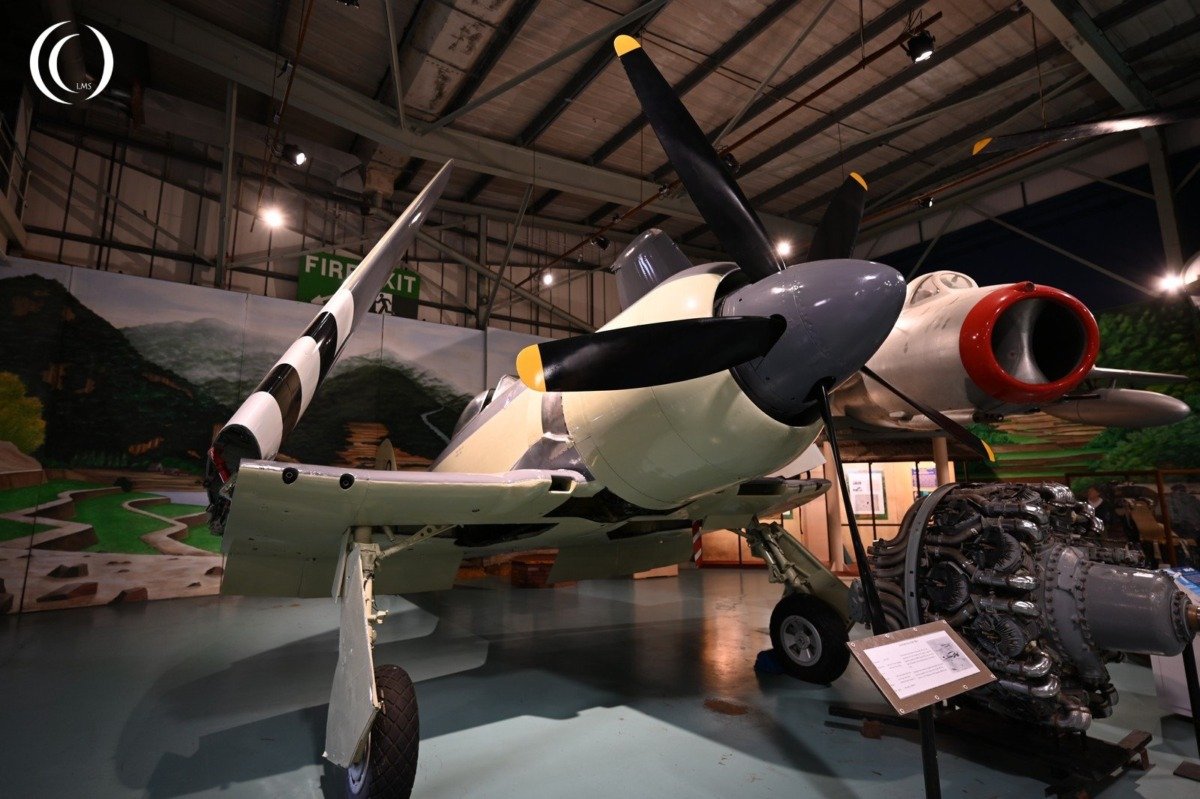
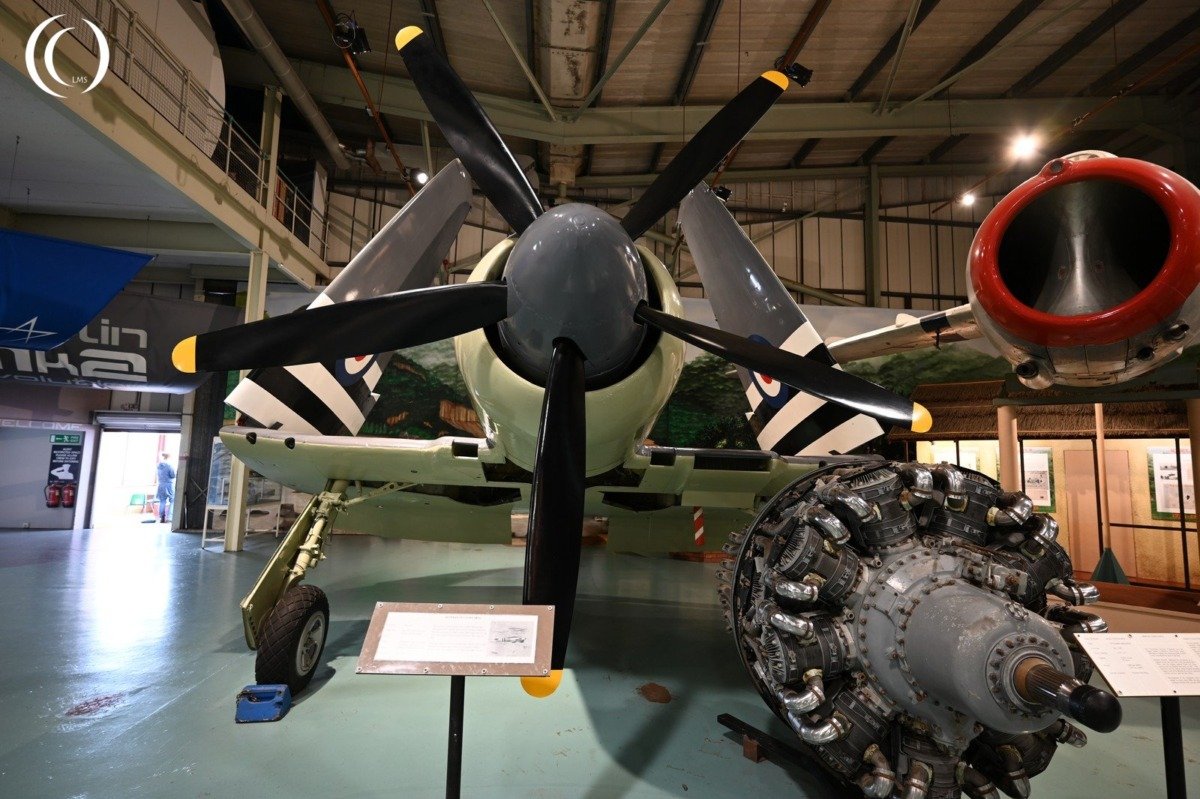
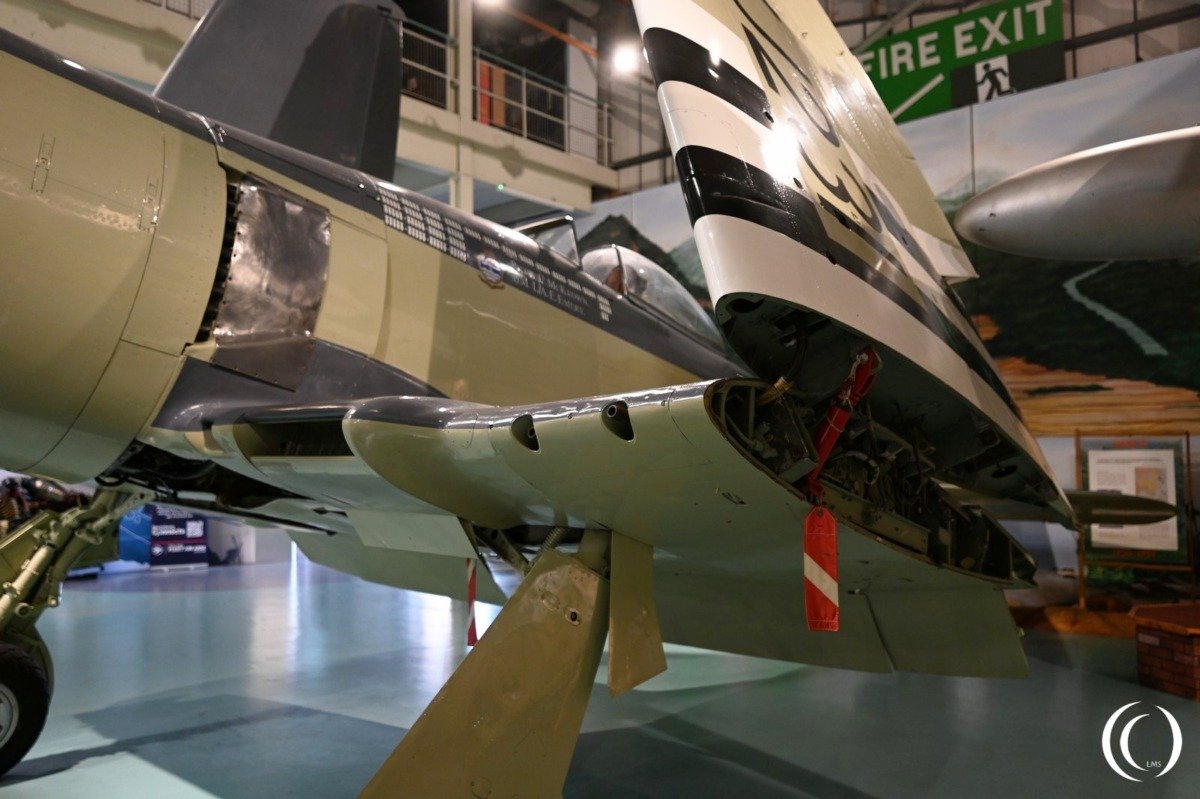
Hawker Sea Fury FB11
The shown Hawker Sea Fury is a FB 11 version with registration / Serial: WJ231 / O‑115, and was delivered in 1951. It served with regular deployments aboard HMS Ocean and with 802 Naval Air Squadron, including time stationed in Japan during the Korean War era. The aircraft was struck off charge (SOC) in August 1965, before being transferred to the museum for preservation.
For a period, WJ231 was displayed under a different serial number, WE726, before reverting to its correct identity.
